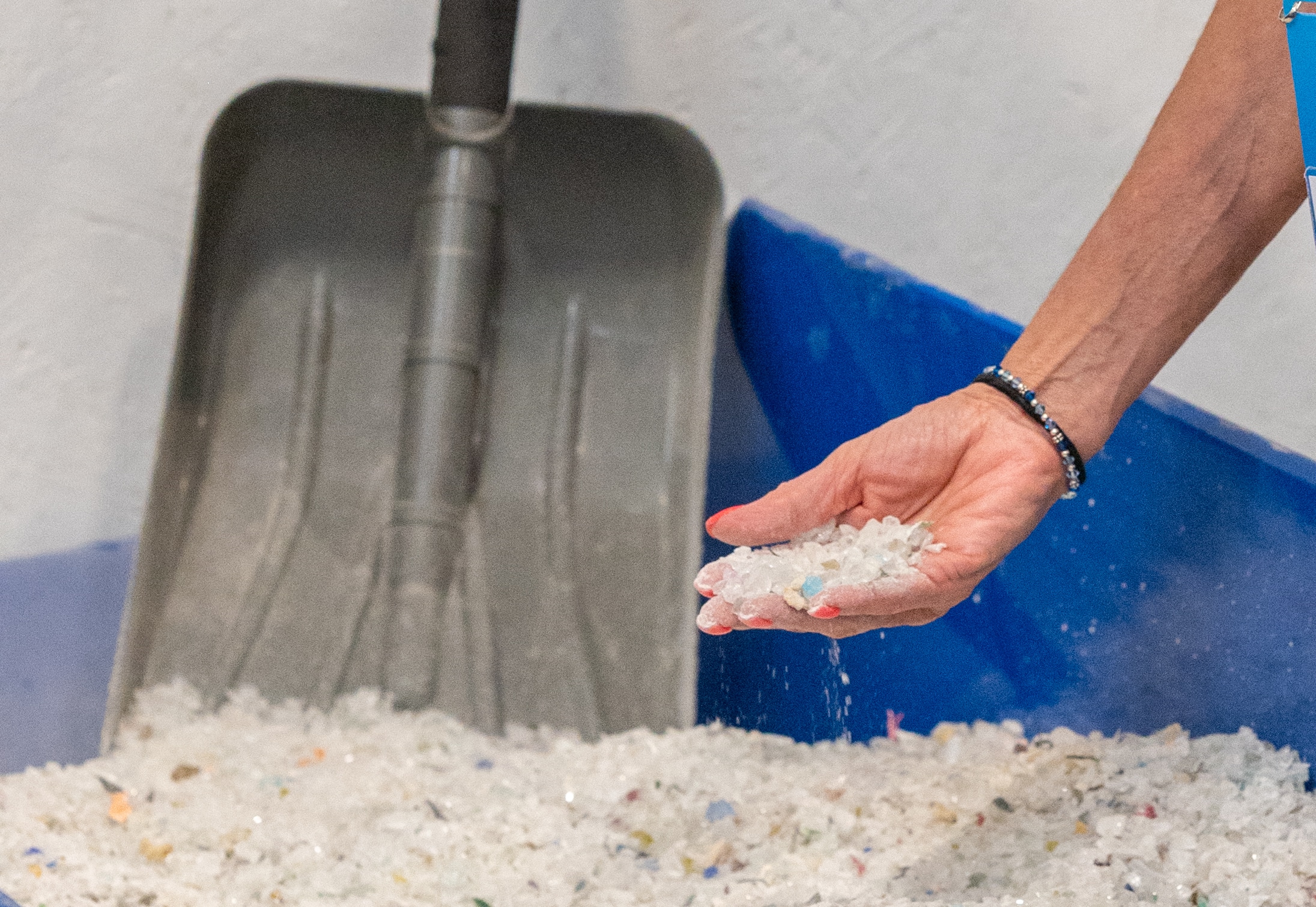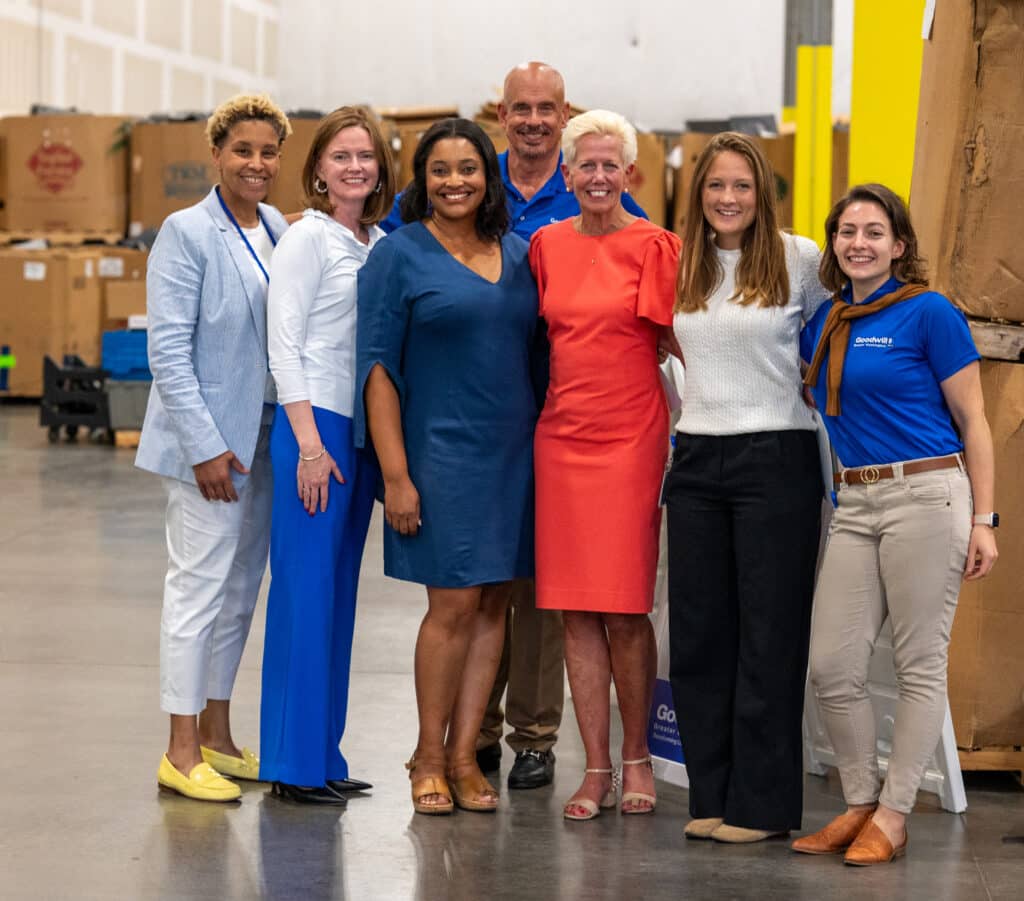
One of my favorite things to do growing up was thrift shopping. At the time, cost-efficiency and resource consciousness were secondary to the delight of scavenger-hunting. Now, as an adult, I try to make more sustainable choices, but it isn’t always clear what those best choices are. Shortly after I joined Goodwill of Greater Washington (GGW), our team was tasked with an initiative -- to educate retail members across three Goodwills about sustainability and provide training on our new glass Pulverizer.
As I was building out the training, I discovered we were already doing more than I knew.
I was shocked to learn that GGW alone sent more than 125,000 lbs. of plastic bags to Trex to keep 11 million bags out of landfills. When I was talking to Nick, our Director of Safety, while on a tour of the Goodwill Sustainability Center, I was informed how we work with Dell Technologies to responsibly reuse and recycle more than 300,000 lbs. of computers, printers, monitors, and cables. Watching the installment of the new glass pulverizer, I was excited to see how we will keep ½ million lbs of unsold glass from the landfill. And not only that, but more than 3.5 million pounds of books are resold or recycled each year, and more than 50,000 pounds of cardboard are crushed and recycled annually. The sheer amount of goods with an afterlife avenue was a startling and profound discovery. This is information I now voluntarily offer to my friends. I know that they care about making sustainable choices and would be ecstatic to find out, like I did, that many of their unsold donations have a robust second life.
To build upon this work, GGW in partnership with Goodwill Industries International (GII) hosted a Sustainability Summit right here in Washington D.C. From the moment the Summit commenced, the energy was absolutely electric.
The first speaker, a former VP of Patagonia and prominent climate activist, kicked off the event with vivid stories of mountaineering and firsthand experiences of our changing world. He finished by positing a question from a revered poet, “Tell me, what is it you plan to do with your one wild and precious life?”. From that moment on, every presentation felt like a call to action.
Each speaker filled in a piece of the complex landscape of consumer goods, from the staggering waste of fast fashion to the potential of plastics recycling. It finally occurred to me that we didn’t build our world to be sustainable. Now, we are looking to disentangle a chaotic web of government programs, international diplomacy, increasingly interdependent supply chains, worker rights, and a massive cultural shift away from conspicuous consumption.
Despite the numerous challenges in creating a more eco-friendly world, it became clear that Goodwill is ideally positioned as an inherently sustainable organization. With a well-respected brand and strong ties at the community level, Goodwills and its partners across the country are poised to make the most significant difference. Most importantly, this room of independent organizations was full of passionate collaborators who understood the power of partnership and seizing opportunities.
The table conversations in between sessions contained as many questions as answers, such as, “How do we get the data needed to make these decisions?” “Does our Goodwill produce enough of a certain material, or do we need to work with other goodwill to produce enough feedstock* to be viable?” Some solutions were found in other members of the Goodwill network, while others are better addressed when the technology itself is further along.
As a young Girl Scout, I had thought helping the environment was simply recycling plastic or using paper straws. Now, as an adult, I recognize not only the complexity of the moment but also its potential. Going from possibility to opportunity to probability to reality can feel more like a marathon than the team sport it really is. I’m thrilled to be a part of this mission and of this Goodwill team.

